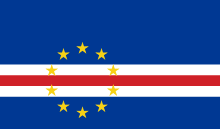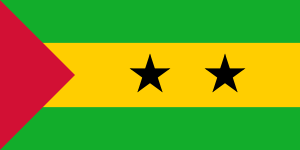Faro, Portugal
| Faro | |||
|---|---|---|---|
| Municipality | |||
|
Panoramic view of Faro. | |||
| |||
 | |||
| Coordinates: 37°02′N 7°55′W / 37.033°N 7.917°WCoordinates: 37°02′N 7°55′W / 37.033°N 7.917°W | |||
| Country |
| ||
| Region | Algarve | ||
| Subregion | Algarve | ||
| Intermunic. comm. | Algarve | ||
| District | Faro | ||
| Parishes | 4 | ||
| Government | |||
| • President | Rogério Bacalhau (PSD) | ||
| Area | |||
| • Total | 202.57 km2 (78.21 sq mi) | ||
| Population (2011[1]) | |||
| • Total | 64,560 | ||
| • Density | 320/km2 (830/sq mi) | ||
| Time zone | WET/WEST (UTC+0/+1) | ||
| Postal code | 8000 | ||
| Website | Official website | ||
Faro (Portuguese pronunciation: [ˈfaɾu]) is a city and a municipality in the Faro District of the Algarve region, in southern Portugal. It is the southernmost city in Continental Portugal.[2] The population in 2011 was 64,560,[3] in an area of 202.57 km2.[4] The city proper has 50,000 inhabitants.[1] It is the seat of the Faro District and capital of the Algarve region. The Algarve and Faro district cover the same territory.
History


The Ria Formosa lagoon attracted human occupants from the Palaeolithic age until the end of pre-history. During that time a settlement grew up – Ossonoba – which was an important town during the period of Roman occupation and, according to historians, the forerunner of present-day Faro. From the 3rd century onwards and during the Visigothic period, it was the site of an Episcopal see of the Christian church.
With the advent of Moorish rule in the 8th century, Ossonoba retained its status as the most important town in the southwest corner of the Iberian Peninsula. In the 9th century it became the capital of a short-lived princedom and was fortified with a ring of defensive walls. At this time, in the 10th century,the name Santa Maria (Shantamariyyat al-Gharb in Arabic) began to be used instead of Ossonoba. Later the town was known as Faro (Pharaoh). During the 500 years of Moorish rule, some Jewish residents of Faro made written copies of the Old Testament. One of Faro's historical names in Arabic is أخشونبة (ʼUḫšūnubaḧ). The Moors were defeated in 1249 by the forces of the Portuguese King Afonso III.[5] With the decline of the importance of the city of Silves, Faro took over the role of administration of the Algarve area.
The English Earl of Essex sacked the town in 1596 and seized the library of the Bishop of Faro. These books were later held in the University of Oxford as part of the Bodleian Library. One of the books stolen was the first ever printed book in Portugal: a Torah in local Hebrew / Judeo Español, printed by Samuel Gacon at his workshop in Faro.
Lagos had become the capital of the historical province of Algarve in 1577 and remained so until 1756, the year following the destruction of much of the town by the 1755 Lisbon earthquake. The earthquake damaged several areas in the Algarve, where a tsunami dismantled some coastal fortresses and, in the lower levels, razed houses. Almost all the coastal towns and villages of the Algarve were heavily damaged, except Faro, which was protected by the sandy banks of Ria Formosa lagoon. Since then Faro has been the administrative seat of the region.
Parishes
Administratively, the municipality is divided into 4 civil parishes (freguesias):[6]
- Conceição e Estoi
- Faro (Sé e São Pedro)
- Montenegro
- Santa Bárbara de Nexe
Facilities
The city has a public university (the University of the Algarve), an international airport (Faro airport), a seaport, a marina, a railway station and complete inter-regional bus services.
Its 30,000-seat stadium Estádio Algarve, shared by the cities of Faro and Loulé, was one of the venues of the Euro 2004 football championship and is also the temporary home ground of the Gibraltar national football team. Louletano Desportos Clube (a club from the city of Loulé) and Sporting Clube Farense (from Faro) also use smaller municipal stadiums. The stadium is also used for concerts, festivals and other events.
Faro airport is not too far away from the city itself. In recent years the numbers of visitors traveling through the airport has increased as more and more low-cost airlines compete to offer cheap flights to the Algarve. The transport facilities to and from Faro airport and the centre of Faro include taxicabs and a bus line.
Climate
Faro has a Subtropical-Mediterranean climate (Köppen climate classification: Csa). Summers are warm to hot and sunny with average daytime temperatures of 27–35 °C (81–95 °F). The weather in the autumn and winter months is generally mild with temperatures around 8–17 °C (46–63 °F). Faro receives most of its rainfall over the winter months; rain is very rare between June and September. The annual average temperature is around 17 °C (63 °F) - 18 °C (64 °F) and the annual rainfall is around 500 mm (19.69 in). The average sea surface temperature is 15–16 °C (59–61 °F) in January rising to 22–25 °C (72–77 °F) in August.
| Climate data for Faro | |||||||||||||
|---|---|---|---|---|---|---|---|---|---|---|---|---|---|
| Month | Jan | Feb | Mar | Apr | May | Jun | Jul | Aug | Sep | Oct | Nov | Dec | Year |
| Record high °C (°F) | 21.9 (71.4) |
24.7 (76.5) |
28.9 (84) |
30.1 (86.2) |
33.6 (92.5) |
37.1 (98.8) |
44.3 (111.7) |
39.6 (103.3) |
37.4 (99.3) |
33.3 (91.9) |
28.6 (83.5) |
24.0 (75.2) |
44.3 (111.7) |
| Average high °C (°F) | 16.1 (61) |
16.9 (62.4) |
19.1 (66.4) |
20.4 (68.7) |
22.8 (73) |
26.4 (79.5) |
29.2 (84.6) |
28.8 (83.8) |
26.6 (79.9) |
23.2 (73.8) |
19.6 (67.3) |
17.0 (62.6) |
22.2 (72) |
| Daily mean °C (°F) | 12.0 (53.6) |
12.8 (55) |
14.8 (58.6) |
16.1 (61) |
18.4 (65.1) |
21.9 (71.4) |
24.2 (75.6) |
24.1 (75.4) |
22.3 (72.1) |
19.3 (66.7) |
15.7 (60.3) |
13.3 (55.9) |
17.9 (64.2) |
| Average low °C (°F) | 7.9 (46.2) |
8.7 (47.7) |
10.5 (50.9) |
11.8 (53.2) |
14.0 (57.2) |
17.3 (63.1) |
19.1 (66.4) |
19.4 (66.9) |
18.0 (64.4) |
15.3 (59.5) |
11.7 (53.1) |
9.6 (49.3) |
13.6 (56.5) |
| Record low °C (°F) | −1.2 (29.8) |
−1.2 (29.8) |
2.3 (36.1) |
3.6 (38.5) |
6.7 (44.1) |
8.0 (46.4) |
11.9 (53.4) |
13.1 (55.6) |
9.9 (49.8) |
7.8 (46) |
2.7 (36.9) |
1.2 (34.2) |
−1.2 (29.8) |
| Average precipitation mm (inches) | 59.3 (2.335) |
52.0 (2.047) |
39.4 (1.551) |
38.6 (1.52) |
21.7 (0.854) |
4.3 (0.169) |
1.8 (0.071) |
3.9 (0.154) |
23.2 (0.913) |
60.1 (2.366) |
90.4 (3.559) |
114.1 (4.492) |
508.8 (20.031) |
| Avg. precipitation days (≥ 0.1 mm) | 12 | 13 | 9 | 10 | 7 | 4 | 1 | 1 | 3 | 9 | 10 | 11 | 90 |
| Mean monthly sunshine hours | 170.5 | 165.2 | 232.5 | 252.0 | 313.1 | 333.0 | 368.9 | 353.4 | 273.0 | 226.3 | 183.0 | 167.4 | 3,038.3 |
| Source: Instituto de Meteorologia,[7] World Meteorological Organization[8] (precipitation days), Hong Kong Observatory[9](sunshine hours) | |||||||||||||
Nature

Faro is located next to the Ria Formosa lagoon, a nature reserve of over 170 square kilometres (66 sq mi) and a stopping place for hundreds of different species of birds during the spring and autumn migratory periods. The beach is roughly seven kilometres (4.3 miles) from the city, and consists of a long sandy spit reached via a bridge.
Events
The Faro International Motorcycle Rally, usually held in mid-July, is a famous festival, renowned in Europe for being one of the biggest of its kind.
The city holiday is on 7 September.
The students' festival (Semana Académica da Universidade do Algarve), organized every year by students from the University of the Algarve, is also an important event in Faro.
Gallery
-
.jpg)
Faro's marina
-
Statue of King Afonso III
-
Faro's Civil Government building
-
Faro, Portugal
-
The City Hall
-
Street in Faro
-

Faro, Portugal
-
.jpg)
Faro, Portugal
-

Carmo Church
-
.jpg)
Faro, Algarve
-
.jpg)
Faro, Algarve
-
.jpg)
Faro, Algarve
-
.jpg)
Faro at night
-
.jpg)
Faro, Portugal
Other locations named after Faro
-
 Faro, Yukon, Canada
Faro, Yukon, Canada
International relations
 Huelva, Spain[10]
Huelva, Spain[10]  Málaga, Spain[10]
Málaga, Spain[10]  Tangier, Morocco (since 1954)[10]
Tangier, Morocco (since 1954)[10]  Bolama, Guinea-Bissau[10]
Bolama, Guinea-Bissau[10] Praia, Cape Verde[10]
Praia, Cape Verde[10]  Príncipe, São Tomé and Príncipe[10]
Príncipe, São Tomé and Príncipe[10]
References
- ↑ 1.0 1.1 "Resultados Provisórios dos Censos 2011". Retrieved 7 February 2012.
- ↑ Detail Regional Map, Algarve- Southern Portugal, ISBN 3-8297-6235-6
- ↑ Instituto Nacional de Estatística
- ↑ Direção-Geral do Território
- ↑ History of the Algarve
- ↑ Diário da República. "Law nr. 11-A/2013, page 552 48" (PDF) (in Portuguese). Retrieved 22 July 2014.
- ↑ Faro - Instituto de Meteorologia, 1981-2010 (provisórias)
- ↑ "Monthly Averages for Faro, Portugal". World Meteorological Organization. Retrieved 5 September 2012.
- ↑ "Climatological Information for Faro, Portugal" Hong Kong Observatory. Retrieved 5 September 2012
- ↑ 10.0 10.1 10.2 10.3 10.4 10.5 10.6 "Geminações de Cidades e Vilas". Associação Nacional de Municípios Portugueses (in Portuguese). Retrieved 2013-07-20.
- ↑ "National Commission for Decentralised cooperation". Délégation pour l’Action Extérieure des Collectivités Territoriales (Ministère des Affaires étrangères) (in French). Retrieved 2013-12-26.
External links
- Official municipal website (Portuguese)
 Media related to Faro, Portugal at Wikimedia Commons
Media related to Faro, Portugal at Wikimedia Commons Faro travel guide from Wikivoyage
Faro travel guide from Wikivoyage
| ||||||||||||||||||||||||||||||||||||||||||||||||||||||||||
| ||||||
| ||||||
| ||||||








